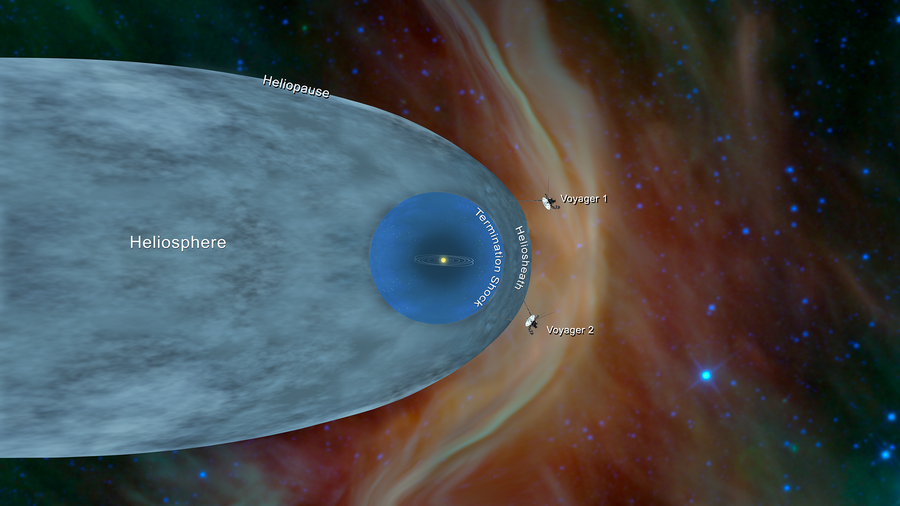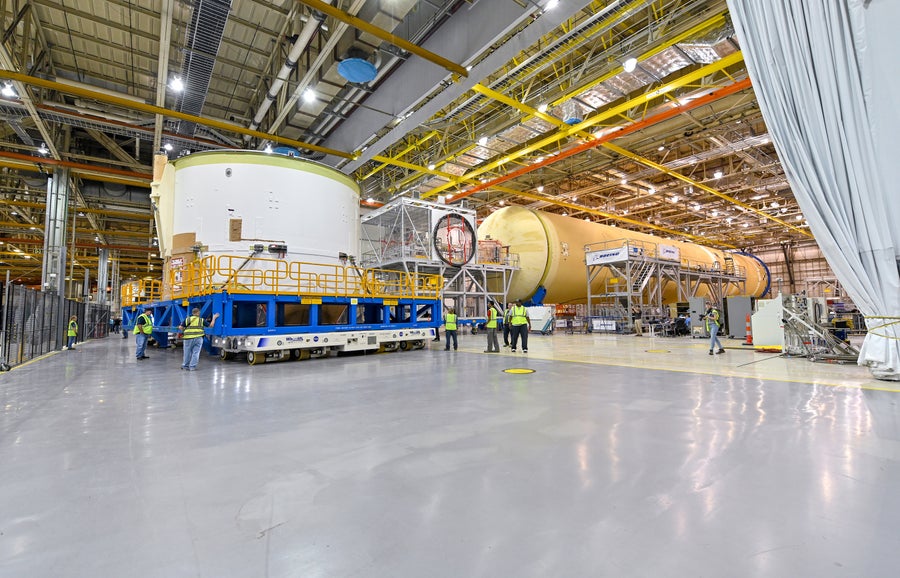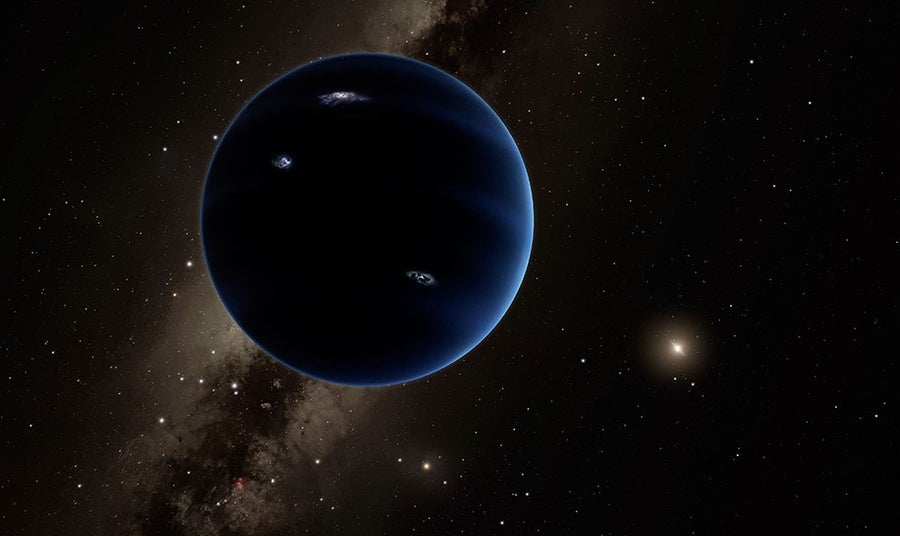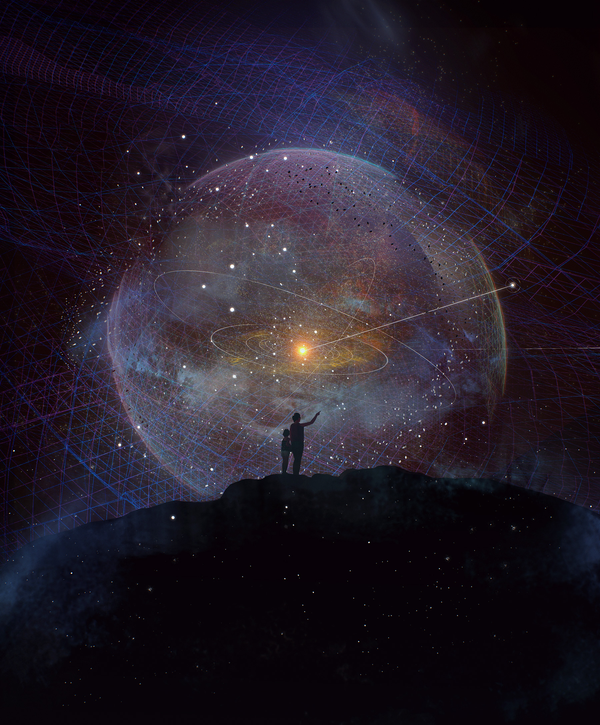Sometime in the mid-21st century, if all goes according to plan, Ralph McNutt will leave the solar system.
Or rather his brainchild will: a potentialNASA mission, provisionally called Interstellar Probe, that, in one form or another, McNutt has been questing after for the past half-century—ever since he was a starry-eyed high school student pondering humankind’s next giant leap after Apollo astronauts walked on the moon. Today McNutt is a 65-year-old physicist at Johns Hopkins University’s Applied Physics Laboratory (APL) and, as the project’s principal investigator, the vital force behind Interstellar Probe. By his count, nearly 200 scientists and engineers around the globe are now actively working to make the mission a reality, many of whom he enlisted personally.
“The Interstellar Probe has the potential of being Lao-tzu’s ‘first step of a 1,000-mile journey,’” McNutt says, quoting a famous line from the Tao-te Ching. “This could be our first deliberate step to the stars. The choice is ours.”
On supporting science journalism
If you're enjoying this article, consider supporting our award-winning journalism by subscribing. By purchasing a subscription you are helping to ensure the future of impactful stories about the discoveries and ideas shaping our world today.
It would begin in the early 2030s, with a launch of a roughly half-ton nuclear-powered spacecraft on the world’s largest rocket, designed to go farther and faster than any human-made object has ever gone before. The probe would pass by Jupiter and perhaps later dive perilously close to the sun, in both cases to siphon a fraction of each object’s momentum, picking up speed to supercharge its escape. Then, with the sun and the major planets rapidly receding behind it, the craft would emerge from the haze of primordial dust that surrounds our star system, allowing it an unfiltered glimpse of the feeble all-sky glow from countless far-off galaxies. Forging ahead, it could fly by one or more of the icy, unexplored worlds now known to exist past Pluto. And gazing back, it could seek out the pale blue dot of Earth, looking for hints of our planet’s life that could be seen from nearby stars.
All this would be but a prelude, however, to what McNutt and other mission planners pitch as the probe’s core scientific purpose. About a decade after launch, it would pierce the heliosphere—a cocoonlike region around our solar system created by “winds” of particles flowing from our sun—to reach and study the cosmic rays and clouds of plasma that make up the “interstellar medium” that fills the dark spaces between the stars. Continuing its cruise, by the 2080s it could conceivably have traveled as far as 1,000 astronomical units (AU), or Earth-sun distances, from the solar system, achieving its primary objective at last: an unprecedented bird’s-eye view of the heliosphere that could revolutionize our understanding of our place in the cosmos.
“We have seen heliospheres—‘astrospheres’—around other stars, but we don’t know the structure of our own,” says Elena Provornikova, a researcher at APL leading planning for the mission’s heliophysics science. “So imagine you are sitting inside your home, and someone asks you what it looks like from the outside. You’d need to step out to see. [Interstellar Probe] would be the first time we send a dedicated instrument payload to go outside and give us that picture.”
Visiting an Astrosphere
It would not be the first active spacecraft to go interstellar: NASA’s Voyager 1 probe exited the heliosphere in 2012, followed by its twin, Voyager 2, in 2018. But the 1970s-era Voyager craft were accidental witnesses, designed for 4.5-yearmissions to study the planets of the outer solar system, not what lies beyond. Only a great deal of luck and ingenuity allowed them to survive to reach the heliosphere at all—with most of their vintage onboard instruments disabled for lack of power.

An artist’s concept showing the locations of the Voyager probes as well as the notional architecture of the heliosphere. Studies by the Interstellar Probe and other missions could reveal the heliosphere’s true shape, settling decades of scientific speculation. Credit: NASA and JPL-Caltech
The Voyager missions’ meager measurements have revealed a complex, dynamic structure, produced by the interplay of our sun’s exhalations with the interstellar medium’s stronger headwinds. Both first passed through a transitional “heliopause” boundary region where the pressures of the solar wind and the interstellar medium are in a delicate balance. Outside the heliopause, the territory remains mostly uncharted. Sculpted by galactic magnetic fields and showers of particles from the ancient, explosive deaths of massive stars, our heliosphere may most resemble a wind sock, stretching out a long, undulating “tail” in its wake as our solar system moves through the Milky Way. Conversely, it may be more like a simple bubble or something in between these two cases—a croissantlike shape with twin, tapered trailing lobes. No one yet knows. But what is certain is that the heliosphere shields us from most of the high-energy cosmic rays that fill our corner of the galaxy—rays that, striking our fragile planet, can alter the climate and even our own DNA, ripping apart the cellular machinery at the base of Earth’s biosphere.
“All these connections somehow unite to form our habitable astrosphere,” Provornikova says. In some sense, part of the answer to the mystery of life’s emergence and endurance on one small planet around one unremarkable yellow star may be found almost inconceivably far away, out at the unknown edges of the solar system.
Voyager 1, the current record holder for fastest outbound spacecraft, is traveling at 3.6 AU per year. McNutt is confident Interstellar Probe could go at least twice as fast—a lower limit that would allow the spacecraft to only get a little more than a third of the way to the aspirational goal of 1,000 AU within 50 years of its launch. “Everyone would like a number that is bigger than that,” McNutt says, adding, though, that a more modest speed would allow more time for scientific observations at any given target along the way.
“To put this in perspective, we could get to where Voyager 1 is now about a dozen years after launch instead of the nearly half-century Voyager 1 has taken to get there,” says Michael Paul, a space systems engineer at APL and one of Interstellar Probe’s co-investigators. Provided, that is, that Interstellar Probe ever launches at all.
Big Rockets, Bigger Risks
First proposed in a 1958 report from the National Academy of Sciences, something like Interstellar Probe has consistently eluded space scientists, who have been stymied by shortfalls in technology and, chiefly, the lack of sufficiently powerful rocketry. With little prompting, McNutt can recite the long, dismal history of fizzled interstellar missions, listing study after study from across the decades (many of which he participated in) that all ultimately failed to launch.
The situation began to change with NASA’s development of the Space Launch System (SLS), a wildly expensive and long-delayed megarocket that is slated for an inaugural test flight in 2021 and is planned to offer almost twice the thrust of any other booster now in operation. Although primarily meant to transport astronauts to the moon and Mars, the SLS could also hurl hefty robotic payloads at high speed throughout the solar system—assuming scientists make convincing cases for that pricey necessity (the latest estimates forecast SLS rockets may only fly once per year, at a per-launch cost of more than $2 billion).
NASA’s premier science application for SLS has been the Europa Clipper mission, intended to seek out signs of habitability and life on an enigmatic, ocean-bearing moon of Jupiter. But the rocket’s schedule slips may force Europa Clipper to launch on a smaller, slower, cheaper commercial booster instead. Such options are harder to contemplate for Interstellar Probe, whose need for speed would push even the mighty SLS to its limits (and thus help justify the rocket’s existence).

Seen here in part during preparations for an inaugural test flight, NASA’s Space Launch System (SLS) rocket could someday launch the Interstellar Probe. Credit: Steven Seipel NASA
“It’s very dangerous to think that something better is coming later and to hope everything perfectly aligns,” says Rob Stough, SLS’s payload utilization manager at NASA’s Marshall Space Flight Center. “It’s great that the SLS is coming online and will be available. This is something that should be taken advantage of.”
For now, McNutt and his colleagues concur. “This is right on the edge of what is technologically doable, and it doesn’t look as good as what’s in Star Trek, but I don’t know where to go to buy those ships,” he says. “[SLS] has a high price tag, but I know where to go to buy the darn thing.”
To that end, NASA’s heliophysics division—which, along with the earth science, planetary science and astrophysics divisions makes up the four pillars of the agency’s Science Mission Directorate—is providing McNutt and his colleagues with $6.5 million across the next three years to firm up the science and engineering details for their notional mission. The resulting study would feed into the Heliophysics Decadal Survey in 2021, a once-every-10-years community assessment meant to guide the federal government in setting the nation’s space-science goals and budgets. Topping the survey’s recommendations when they are released in 2023 would be the biggest step yet toward making Interstellar Probe a reality. And failing to meet that mark would likely relegate it to at least another decade in mission-planning limbo.
Even if Interstellar Probe gains the survey’s coveted blessing, however, McNutt and his colleagues believe it still needs “buy-in” from stakeholders elsewhere in NASA, such as the agency’s planetary science and astrophysics divisions, to maximize its chances of actually flying. Hence the mission’s packed provisional agenda of interdisciplinary science observations on its way out of the solar system, which run the gamut from studying dwarf planets to gathering the light of distant galaxies. Ideally, each set of observations would use its own dedicated instruments and rely on a unique, individualized flight profile—both impossibilities on this fast boat out of the solar system, where everything onboard must be multipurpose and even minor trajectory tweaks can carry major consequences.
The Tail Wags the Dog
The resulting tensions between different research communities hoping to capitalize on the mission were already apparent at a recent workshop dedicated to the Interstellar Probe’s science held at the Explorers Club in New York City. To some attendees, the interdisciplinary discussions made the mission’s supposed heliophysics focus seem to be almost an afterthought.
“If the main objective is to know the shape of the heliosphere, that should override anything else,” says workshop participant Tom Krimigis, a veteran principal investigator of Voyager at APL who has worked on missions to Mercury, Pluto and every planet in between. “We must not make Interstellar Probe a ‘Christmas tree.’ If everyone gets to hang their own ornament, then, of course, it will be too heavy and costly and will sink of its own weight and never happen.”
A key point of contention is where the spacecraft should actually go. Following in the Voyagers’ footsteps by exiting in the vicinity of the heliosphere’s thin, leading hemisphere—its “nose”—would presumably grant the quickest access to the interstellar medium and also allow closer studies of a mysterious ribbonlike feature of energized atoms first observed in 2009 that is draped across part of the heliopause. Moving laterally out of the solar system—out of the heliosphere’s “flank”—could provide a better overall view of the heliosphere’s shape and bolster studies of interstellar dust swept along at its turbulent edges. Another factor in favor of the flank is a potential plan for China’s space agency to conduct a heliospheric mission of its own, proposed by Qiugang Zong of Peking University. Zong’s proposal calls for twin “interstellar express probes,” with one launched toward the nose and the other toward the tail as early as 2024—with both reaching around 100 AU by 2049.
“It would be interesting to see those results,” says Kathleen Mandt, Interstellar Probe’s deputy project scientist at APL. “And if we go out the flank, we’d have all three directions covered.”
Scientists studying the swarms of dwarf planets and other icy flotsam beyond Pluto were perhaps the only participants at the workshop who were agnostic about the probe’s trajectory. “Whichever way the heliophysics community wants to point the spacecraft, there’s one or more very interesting [objects] in the way,” says William McKinnon, a planetary scientist at Washington University in St. Louis. That agnosticism could end, however, if astronomers soon discover a fifth giant planet that circumstantial evidence suggests may lurk far out in the solar hinterlands. Leading theoretical models based on the putative planet’s influence on the orbits of smaller objects suggest it may be five times the mass of Earth and somewhere between 400 and 500 AU away from the sun, toward the heliosphere’s tail.

An artist’s illustration of a hypothetical fifth giant planet that may exist far beyond Pluto. Such a world could be an irresistible target for Interstellar Probe as the spacecraft leaves the solar system. Credit: Caltech and R. Hurt (IPAC)
“If a fifth giant planet were discovered, there would be a very strong case for going toward it,” says Kirby Runyon, a researcher at APL who is leading planetary science planning for Interstellar Probe. “There would still be heliophysics to do with that sort of flyby. Maybe we should let the tail wag the dog.”
Sending Interstellar Probe to fly by a newfound giant world would almost certainly cement the involvement of NASA’s planetary science division, potentially boosting the mission’s budget and securing its path to the launchpad. It would also, however, risk scuttling the mission’s primary, heliophysics-driven science objectives. “If the heliosphere is shaped like a wind sock, do we get to the interstellar medium at all if we go toward the tail?” Provornikova says. “Some models predict the tail might extend for several thousand AU. If that’s true, the spacecraft might get there eventually, but none of us would live to see it.”
A Voyage in Space—and Time
Truth be told, even if it does launch, actuarial tables and the long timescales of deep-space missions offer bleak prospects for all but the very youngest of Interstellar Probe’s planners to see the entire endeavor through. But this, too, is something being accounted for: last year, Mandt formally invited Janet Vertesi, a Princeton University sociologist who studies spacecraft teams, to take part in the Interstellar Probe mission.
“Most of the people planning this will be dead by the time it is finished,” Vertesi says. “And none of the missions we’ve ever launched before have taken that kind of longevity into account. But Interstellar Probe needs to plan for a multigenerational, sequential process from the beginning. The baby boomers run it now and the Gen Xers will run it next. But millennials will be running it when it hits the heliopause, and Gen Z is going to run it when it reaches the interstellar medium.”
Some of Vertesi’s concerns are technical: how to structure scientific observations across multiple generations; how to read and preserve data from a half-century-old spacecraft. But the ones she ponders the most are cultural: How do you ensure the hard-won operational knowledge of one generation is passed on to the next and endures the assault of time? How do you guarantee individuals will gracefully step away after devoting their entire working lives to some greater, still unrealized cause? Solutions for those problems, she suspects, will not be found in any spreadsheet or supercomputer calculation. Successfully navigating beyond the solar system’s limits will instead require rekindling the timeless arts of storytelling and of ritual, creating a mission-based mythos, around which successive generations of scientists can cohere.
“We are very deliberately preparing this mission not just to succeed in reaching the heliosphere but to also succeed in handing off leadership from one generation to the next,” Paul says. “We realize that we are not the reasons for this mission—we are instruments through which the Interstellar Probe will be realized.”
All of which is pleasing to McNutt, who, across his decades-long interstellar pursuit, has occasionally compared himself to Sisyphus, the figure from Greek folklore doomed to push a forever-backsliding boulder up a mountain. “I’ve been trying to roll this stone up a hill,” he says. “But I’ve also been desperately trying to convince someone else that they would really, really like to take over.”
